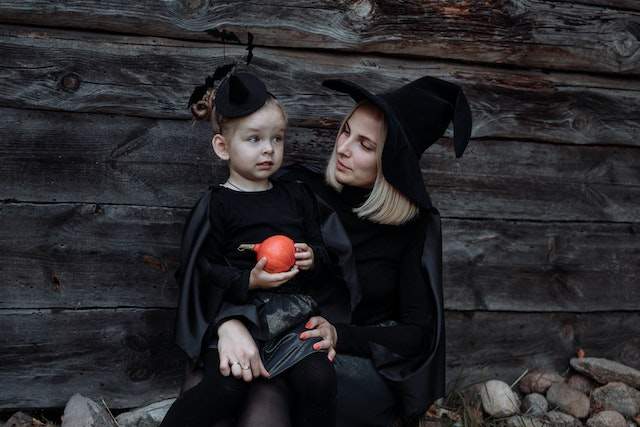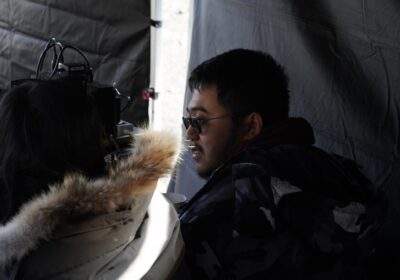
Halloween: Peeling Back The Layers Of The Spookiest Day!
Halloween – the spookiest day is just around the corner. From carved/painted pumpkins to spooky costumes, jack-o’-lanterns, horrible tales, scary movies, and “trick or treating”, everything is going to spice up the day. And, the world is busy in whoop the scariest day of the year up!
Have you ever wondered why this particular day in the entire year is so scary? Why is it marked by such macabre rituals? How did these natural elements like animals and veggies become intertwined with this day?
History has preserved the answers for us to delve into. These rather barbaric rituals found their origin long ago – likely 2000 years ago — as initiated by the ancient Celts who lived in what is today known as Ireland, Northern France, and the United Kingdom.
Tradition Sprouted A Long Ago:
Celts pagans observed November 1 as the new year. So they celebrated “Samhain” on the preceding night (i.e., October 31st) which indicated the end of summer and the beginning of winter. As the harvest season ends with the bountiful summer, they associate the onset of winter with death. They also believed that the boundary between the spiritual world and the evil world was thin during Samhain. During that time, their ancestors would roam on the earth. To safeguard themselves from the spirits, they disguised themselves as animals and ghosts.
As part of the tradition, during Samhain, they left the hearth fires to burn completely until they finished harvesting and ended the day with gatherings around bonfires burnt by priests. That bonfire served as a hub for them to tell “ghost stories” and engage in “mischief-making”. The rituals continued until the 10th century when Christianity started emphasizing its influence.
What’s more, is that the Catholic Church announced 1st Nov as “All Saints Day” – known as “All-Hallows” – to honor the saints and 2nd Nov as “All Souls’ Day” – to honor the deceased souls. Not stopping there, the Pagans’ Samhain was also given a new name – “All-Hallows Eve”. Over time, the three days together are known as “Halloween.”
How Did It Set Sail To The Land Of America?
The credit goes to the Celtic immigrants who kept their traditions alive in the new land of America. But still, it wasn’t celebrated nationwide and was limited only to the colonies, except Maryland and some South Colonies which were highly dominated by Christianity.
The popularization of this celebration occurred only in the 19th century with the immigration of millions of Irish Pagans, escaping the “Irish Potato Famine.” With more and more immigrants, the Pagan ethnicity began to blend vastly into America. And, so did the Halloween tradition. Eventually, by the early 20th century, “Halloween Holiday” was celebrated all over North America.
But it is not the end! We have Halloween elements, right? How did they become part of the tradition?
The Origin Of Halloween Elements:
The cauldron of Halloween stirs together various elements. Black cats, pumpkins, battles, lanterns – each brought its own unique flavor to the tradition. As for the “trick or treating”, it came from a practice known as “Souling”. On “All Saints’ Day” and “All Souls’ Day”, needy people of Irish and Scottish descent used to go to the doors of wealthy families and collect “Soul Cakes” – Pastries – in exchange for a promise to pray for their deceased loved ones. Later, this tradition was picked up by the children. As the 20th century rolled on, it fused with neighborhood parties along with entertaining games like hunt-for-sweets, mischief-making, apple bobbing, glow-in-the-dark tic-tac-toe, to name a few.
Then there are carved pumpkins, known as “Jack-O’-Lanterns” – which is associated with an Irish soul – “Stingy Jack” who roams around the earth, by hoodwinking the evils so as not to take his soul after his death. After his passing, as he couldn’t enter heaven, he was left to roam with burning coal (which he inserted into the turnip he was eating) into the dark. Therefore, Celts people carved potatoes, turnips, and beets into the version of Jack’s lanterns and kept them at the doorsteps to ward off wandering Jack and other evils. Upon immigration to the United States, Irish people found their native Pumpkins even better to crave. Ergo, the tradition carried on.
As for the Halloween attire, the custom again has its roots in the Irish tradition. As they believed that during the ‘Samhain,’ souls were left free to roam the earth for a limited time, they donned disguises to trick the souls. These costumes were mainly made up of animal skins and heads. In time, this tradition made its way into American culture with the wave of Irish immigrants. As to the bats, the bonfire lit by priests during the ‘Samhain’ attracted bats and small flying critters. Additionally, the Celtic Pagans hold an age-old association of ‘Black Cats’ with ‘Witches’. Thus, the ‘bats’ and ‘black cats’ journeyed into the ‘Halloween Tradition.’
Needless to mention, Halloween, in the modern era, has taken a new shape. In America, it has become more than just knocking on doors for candies. According to the survey conducted by the National Retail Federation, Halloween spending for 2023 is expected to be around $12.2 billion, surpassing last year’s record of $10.6 billion. This year, like before, people have come up with new ideas to celebrate. Hanging out candy with 68% vote, dressing up with 50%, and decorating with 53% are some trends observed in surveys. On that note, a candy shop owner from ThreeBestRated® also confirms the highest order they received for the ‘Halloween themed cakes and candies.’ This sheds light further on the excitement and anticipation people have for the scariest celebration.

















